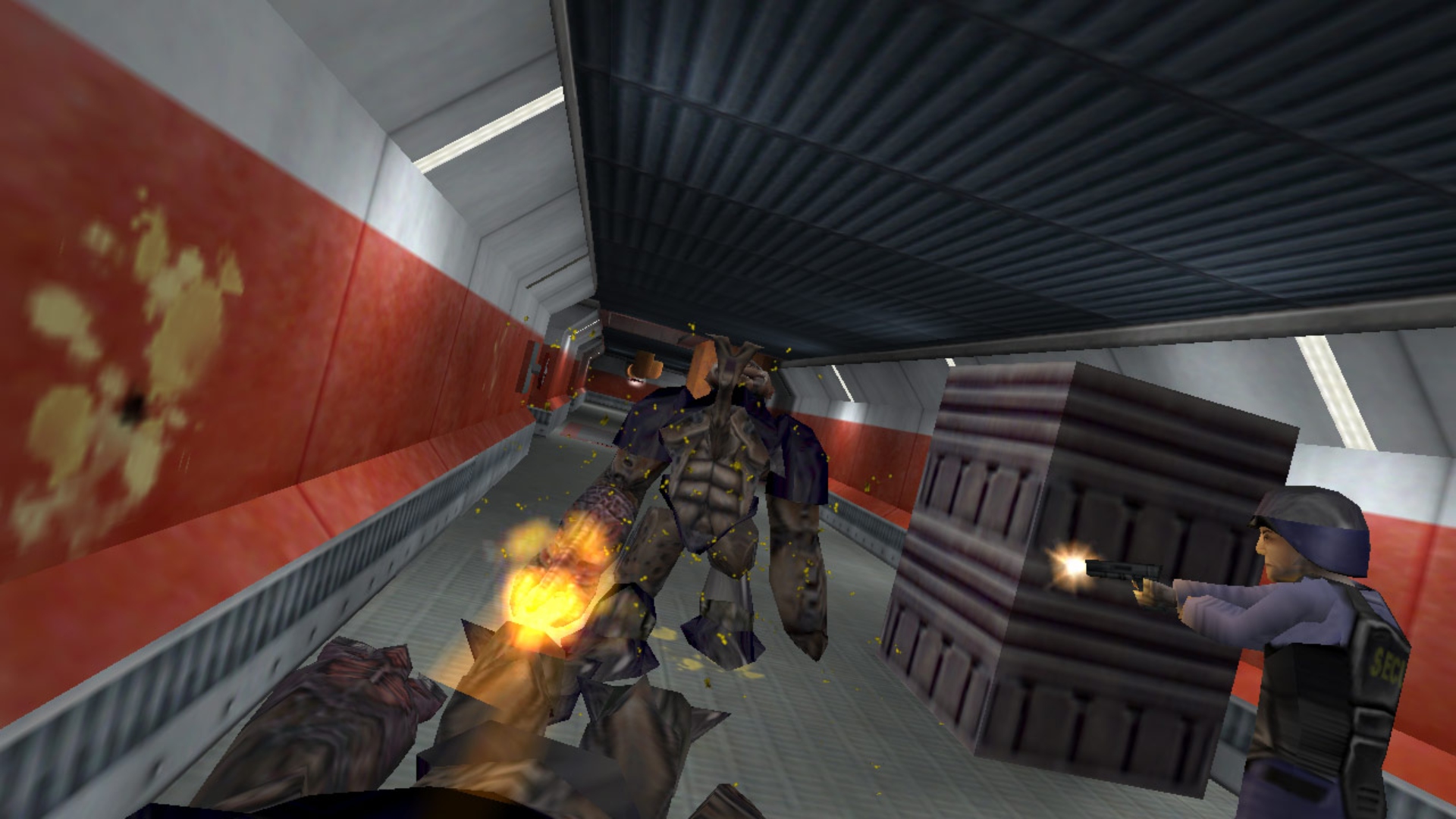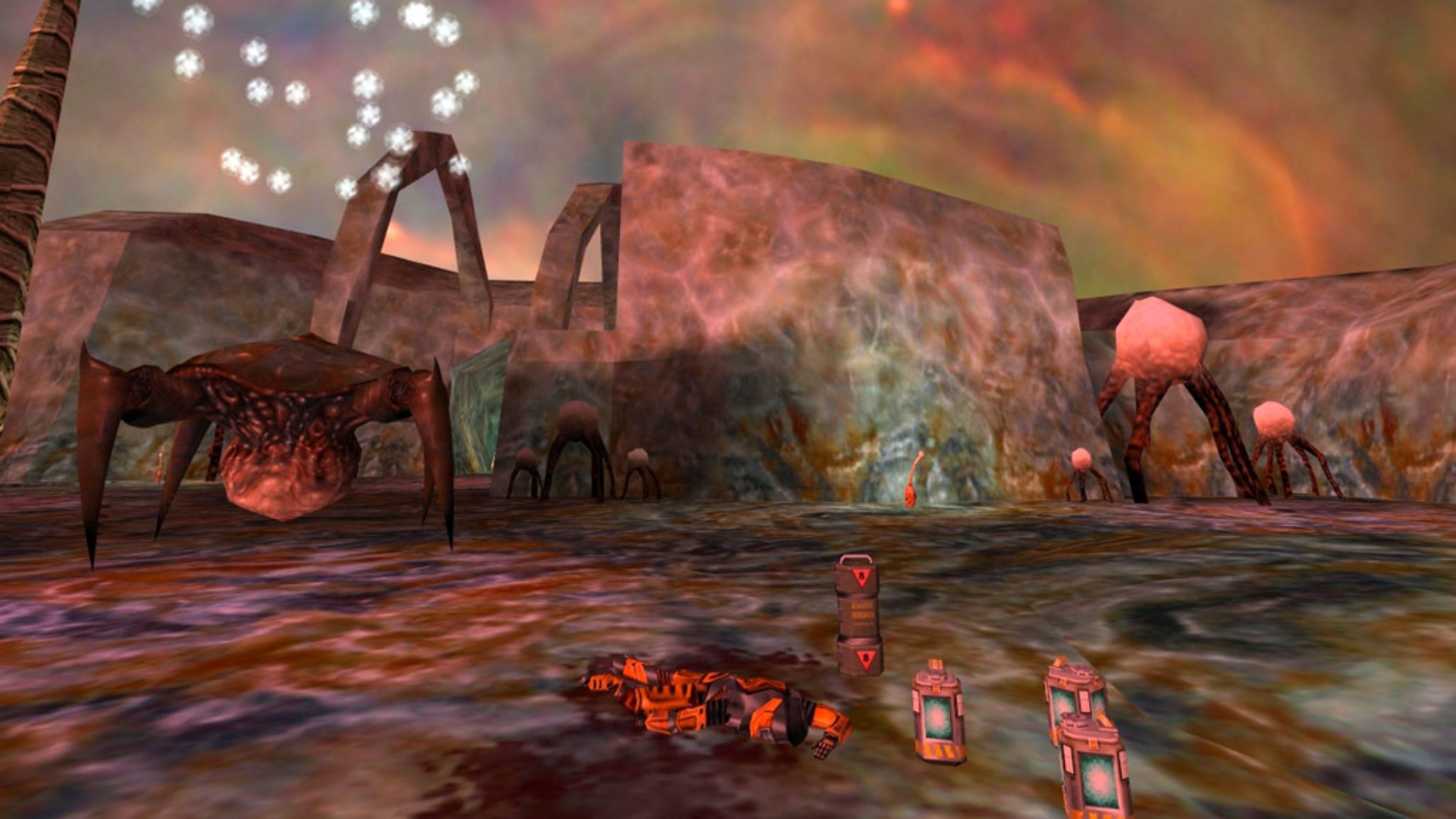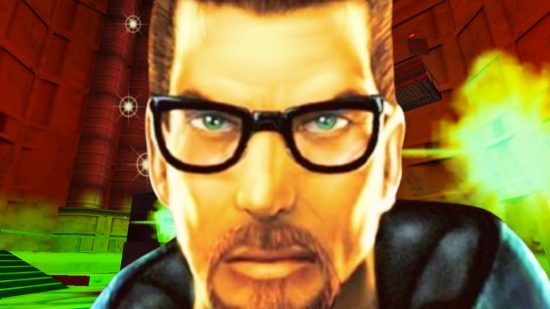Half-Life recently hit its 25th anniversary, and after going free on Steam for a limited time, interest in Valve’s classic FPS spiked once again. It’s undoubtedly iconic. Half-Life’s success made Valve one of the biggest names in gaming, helped to shape the entire FPS genre, and in many ways defined the direction of the entire industry. One of the primary reasons for its success, though, is its unique oddness among triple-A games, even making its era-defining sequel look conventional. There is simply nothing else quite like Half-Life.
Half-Life tells a simple story of science going awry, with 20-something protagonist Gordon Freeman finding himself at the center of an experiment that summons creatures from another dimension. In terms of bringing this relatively basic premise to life, however, the FPS game is immensely creative, drawing on a range of influences from sci-fi and horror, but blending them all with what would become Valve’s signature style. The Mist is a noted and famously scary inspiration. This horror of Stephen King’s novel sits alongside mid-century camp in the aloof, doomed, Black Mesa scientists, and the surreal Lovecraftian design of Xen’s creatures. It makes for a striking aesthetic that transcends the original, potentially generic narrative premise.
This visual gestalt is reflected in the game’s structure. Half-Life is not a straightforward corridor shooter like it forebears, or underdesigned like some of its more forgettable successors. Each level represents a unique, contained sub-story, offering specific challenges and a brief narrative arc. Defeating a fearsome tentacle monster, sending a satellite into space, and evading a military invasion are just some of the challenges that face both Gordon and the player. The episodic nature makes for a succession of memorable moments, and undoubtedly influenced the likes of Uncharted, God of War, and game developers that pride themselves on creating distinctive, granular moments.

But despite being episodic, Half-Life is far from TV – it consistently engages with possibilities and sensibilities that are exclusively videogamic. Valve is at its most creative here. This initial chapter in the studio’s acclaimed history represents a willingness to explore the eccentric reaches of game design, and the upper limits of technology. Shooting is mixed with frantic chases, sound-based challenges, underwater escapes, and even dangerous rail travel. Your skills are challenged, but just as you become comfortable with a certain component of Half-Life’s challenge, something new is introduced. It’s a contrast to the numbing nature of some modern games, too interested in realism and cinema.
The sudden interest in replaying Half-Life, generated by the 25th anniversary, potentially stemmed from the disappointment players feel towards the major shooters of today. Even Halo, consistently regarded over the years for its single-player campaigns, is unlikely to generate the same enthusiasm now, post Halo Infinite, a game with solid gunplay but undermined by a bland, commercially obligated open world. Halo’s heyday is still very much 2001 when its universe and gameplay were fresh, surprising, and formed in the risk-taking mold of Valve.
The enduring legacy of Half-Life, and part of its new appeal in the context of 2023, lies in its approach to lore and storytelling via visuals and environmental design. Valve’s distinctive art and texture work, the presence of shadowy figures seemingly pulling the strings, and the overarching mystery of Black Mesa make it much more engaging than the backstory-heavy franchises that exist today, and bog players down in redundant info. From Assassins’ Creed to Five Nights At Freddy’s, modern mainstream games are choking on frontloaded, purely verbal narrative, seemingly deployed to increase the possibilities of sequels and spinoffs.

Nevertheless, despite everything that Half-Life does right, it is undoubtedly imperfect – the later sections set in Xen are uncharacteristically frustrating and unimaginative, bringing the narrative and ludic momentum to an unfortunate, pre-climactic crawl. There is something to be applauded, though, about the fact that Half-Life is a flawed game. It wasn’t crushed under corporate oversight to fit neatly next to other big titles. It is a release that is its own thing, not beholden to expectation, but the authorial vision of its creators.
Half-Life feels, as a result of its idiosyncratic nature, like more of a mission statement for the industry than Doom did five years before. Doom feels like a well-oiled proof of concept for the technological leaps videogaming was about to make, whereas Half-Life feels like an example of the uniquely compelling strengths of the form. Even today, it still is better than most at highlighting the unique features of the medium, especially in retrospect of modern gaming’s unceasing obsession for mimicking film and TV.

Half-Life’s sequels replicate some of what the original did so well but lack the magic that makes it so fun to play even 25 years later. Half-Life 2 has a lot to offer with an engaging story, memorable world, and solid gameplay, but doesn’t have the playfulness that underpins its predecessor. There are lots of interesting new ideas: squads of animals controlled by pheromones, buggies and boats, and the much-loved, physics-defying gravity gun. However, it isn’t happy to shift so frenetically between experiences, or willing to combine horror, camp, and occasional goofy slapstick. It feels like the start of a more self-serious type of shooter that has dominated the genre for the past two decades.
There aren’t many games like Half-Life in the whole history of the industry, and that’s because it has a clarity of vision that even Valve doesn’t seem to have been able to recapture. Valve, indeed, has moved away from videogame development – in tandem, mainstream videogame culture has become increasingly corporate and bloated. But maybe the brief return of Half-Life may remind the industry – such as it can be singularly personified – of the design, humor, and originality that once propelled videogames into a major new artform.
If you’re a Half-Life fan, try some of the other best old games that you can still get on PC. Alternatively, look ahead to the future of the medium with the best upcoming games set to arrive in 2024 and beyond.
